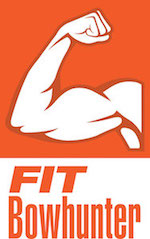 Last year, mere months before the 100-mile Grand Mesa run I had been training for , I received an email that the event had been canceled. I was crushed. I had pushed my body to its physical threshold and was ready to run 100 mountain miles on Colorado’s storied Grand Mesa. Desperate, I jumped on www.ultrasignup.com and started trolling for another race.
Last year, mere months before the 100-mile Grand Mesa run I had been training for , I received an email that the event had been canceled. I was crushed. I had pushed my body to its physical threshold and was ready to run 100 mountain miles on Colorado’s storied Grand Mesa. Desperate, I jumped on www.ultrasignup.com and started trolling for another race.
Then, I found it. A 100-mile mountain run in Ouray, Colorado, and it was only a handful of miles from where my original race was set to take place. This would do. While reading up on the race, things like “42,000 feet of elevation gain,” “one of the toughest ultra’s in the world” and “less than a 10 percent finish rate” jumped out at me. I had just signed up for a race that would require me to continually run up and over 12,000- and 13,000-foot peaks. (Yikes!)
I hadn’t prepared for the extreme ascents and descents, but I gave it go. At mile 60, with sleet pouring down, I stumbled into the 60-mile aid station. I was done. Sure, the registered nurse on staff medically dropped me due to a 101-degree temperature and an oxygen count of 85, but I wasn’t planning to go on anyway. I hit a wall, and it was time to stop. In fact, I should’ve stopped miles earlier.
Related: The Long-Distance Running Debate
Currently, the Grand Mesa run is under new directorship and is set for July 29-30, 2017. I registered for the event the second it opened. Since failing in last year’s Ouray run, I’ve boosted my training — taking it to a new level, focusing on logging more miles and getting in more vertical runs. It seemed to be working. At least, that’s what I thought.
This past week, I planned to log 80 miles. That may sound like a lot, but I’ve been gradually adding miles and knew I could accomplish the goal without risking injury. I took Sunday off and gave myself a rest day knowing that I’d feel terrific the next day. However, after logging 15 miles on Monday, I felt like crap. My legs felt heavy, and my heart thundered in my chest when I hit the hills. When the run was over, I did what I usually do when a workout doesn’t go my way — I panicked.
I decided for Tuesday I would simply run for time and not worry about pace or mileage. But even then, I ran for two hours and felt awful. Something wasn’t making sense. I hadn’t deviated from my diet, I was getting adequate rest, and I hadn’t deviated my training log that was developed personally for me by a world-class distance runner and fitness expert. I was pissed!
That night, I couldn’t sleep. Picking up on my restlessness, my better half asked a simple question, “Honey, what’s wrong?” after which I rattled off the “poor me” story to her. She then explained that in the last week I had expressed a lot of work stress to her. She asked if I was thinking about work while I was running. I explained that I was, and she said by doing that, I was hindering my ability to focus on the run. The stress was causing injury. She also pointed out that while I was certain I was getting the right amount of rest, I really wasn’t.
Related: The Fit Bowhunter Rebounds By Running For Time
On the brink of turkey season, I had been rising earlier than normal to scout, would work all day and then run at night. This was a serious change to my typical mid-morning running routine. My wife is a registered nurse, and she suggested I take the rest of the week off and start up again on Sunday. Naturally, I immediately dismissed the idea.
I felt if I took that many days off, I’d lose endurance, stamina, and speed. Then, I started thinking back to Ouray. I should have dropped at mile 50, but I didn’t and ended up hurting myself. Besides getting sick, I hurt my hip and used the adrenaline of the run to block out the pain. I couldn’t run for two months after that. When I started back, I just knew I’d feel terrible and be out of shape. I decided, for whatever reason, 13.1 miles would be good indicator to determine how out of shape I was. Luckily, I was able to hammer it out. In fact, at that point, it was my personal best half-marathon time ever. I decided to heed my wife’s advice and take four days off. It was a miracle cure. I’ve logged 30 miles this week and feel incredible.
So, what’s the point? During you’re training — and no, this doesn’t just apply to running — be flexible and willing to alter your training schedule if you hit a wall. If you train long enough, it will happen. The “wall” may be a result of a poor diet, being sick, being stressed, not getting enough sleep and so on. The key, especially when pushing through doesn’t work, is giving your body time to rest. If you’ve been training hard, taking four or five days off won’t hurt you in the slightest. In fact, you may come back stronger than ever.
Check out these other #TheFitBowhunter posts:
- Train for the Season by Camping Solo
- Sign Up For The Alpha Bowhunting Challenge
- A 20-Minute Workout for Overscheduled Bowhunters
- How About Some CrossFit?
- Run a Race To Get Bowhunt Ready
Featured photo: iStock






